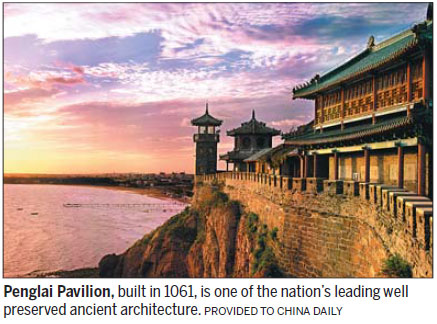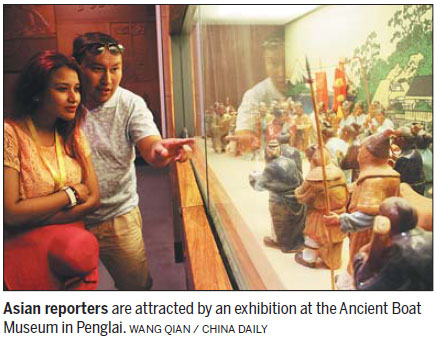Making the most of Chinese wine

The cavernous cellar at Chateau Junding in Penglai is chilled to a cool 15 C with a sticky humidity of 75 percent. Row after row of aged oak barrels, imported from Europe and the United States, are stacked on top of one another filled with slowly maturing wines waiting for the perfect moment to be decanted and accompanied with a nice soft brie.

"This is the largest multifunctional wine cellar in all of Asia," my tour guide boasts. The Nava Valley in Penglai, Shandong province, has been making a name for itself in recent years and is now home to 30 chateaus producing wine for the domestic and international market. Through the dim light I see that many of the barrels have actually already been sold. "Many companies including Alibaba buy our wine," she says.
Penglai lies on a latitude of 37 degrees - the coastline's ideal sand, sun and sea make for ideal wine producing conditions, or as the French might say, "terroir".
So big has Penglai's wine industry become that paired with Yantai it is China's largest wine region, producing 40 percent of the entire country's wine. Granted, much of that is made by Changyu, China's largest and oldest wine producer, whose Yantai wine town is the size of 800 football fields and can produce a mere 25,000 bottles of wine per hour.
The popularity of wine in China has been on the increase since the 1980s and it is predicted to become the world's second-largest wine market by 2020.
Chateaus, such as Junding along the coastal line of Penglai, have a great opportunity to make gains in such a growing market.
Compared to Changyu, Chateau Junding is small fry, and so has diversified its business to offer consumers something a little different. Not only does the vineyard produce its own wines, but it is also one of the largest seedling growing bases in China, a golf course and a resort hotel.
Despite the chateau's European iconography, Zhang Zhengwen, general manager of the vineyard at Junding, tells me that they are very much focused on producing wines for the domestic market and Chinese tastes.
"In the beginning, our wine had a lot of influences from Europe ... but now we use local grapes to produce local wine suitable for our consumers," Zhang says.

"You know in Europe they eat a lot of meat but in China we eat more vegetables, so we need to make our wines with less tannins, less acidity, more elegant, more fruity and easier to drink, especially for the 'ganbei'."
Climbing the stairs out of the cellar and returning to ground level, a golden shaft of midday sun glitters through French windows of Junding's grand chateau. Across the horizon, rolling hills are combed with canopies of green grapevines. It's about lunch time. Time for a drink, methinks.
The author is an editor of China Daily and his email is owenfishwick@chinadaily.com.cn

(China Daily 07/18/2017 page24)








